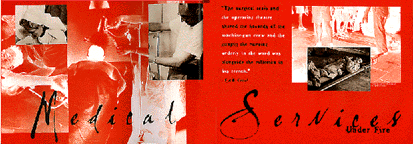


[Click on picture for larger image, which takes longer to load]
Contents |
The Japanese army first landed in southern Thailand and northern Malaya on December 8, 1941. This was one arm of a major offensive throughout the Pacific Theatre that included the destruction of the American Fleet in Hawaii and the invasion of the Philippines and Hong Kong. All this took place in the span of several hours. Immediately, the Japanese began air raids upon air fields in Malaya and Singapore. The Japanese overran allied defences in the Kota Bharu region and infiltrated Kuala Lipis, Kuala Trengganu and Kuantan. On the western side of the peninsula, the Japanese picked their way along the railway line into the regions of Jitra, Gurun, Kampar and the Slim River. Throughout the two-month battle for Malaya, the Army Medical Services fought their own war to save lives. As the Japanese advanced and the allied lines retreated, soldiers were evacuated to nearby hospitals. These hospitals were then evacuated as the Japanese approached, with the wounded being transported either to hospitals further south or, if possible, to Singapore. |
The situation in Singapore became increasingly chaotic. As the Japanese pushed their way south to force the allied army retreat, the stream of people and equipment into Singapore turned into a flood. The medical services on the island were on the verge of collapse. The anticipated number of 8,690 hospital beds in Singapore by the end of 1941 should have been sufficient. However, because few wounded had been evacuated out of Malaya since the beginning of the campaign, the beds were nearly all occupied.
In order to cater for the incoming wounded, hospitals made every effort to expand their facilities. Alexandra Military Hospital managed to accommodate an estimated 900 patients by the time the Japanese arrived on its doorsteps on February 14. The hospital had recently been expanded to 550 beds, but in order to squeeze in another 350 patients, make-shift beds ("camp beds") were placed in between existing beds, in corridors and throughout every available space in the hospital.
The scarcity of beds was compounded by the lack of water. F.A.E. Crew, author of The Army Medical Services, explains, "the piped water supply of the hospitals quickly became utterly insufficient; water had to be carried to the wards and theatres in buckets, and in buckets the refuse and the excrement had to be carried out." It was reported that by the 14th of February, water had been rationed in Alexandra Hospital to one pint per man per day. This was already a serious threat in the tropical heat and humidity where dehydration was always imminent. But in a hospital, the consequences of a water shortage were disastrous: hygiene became impossible, bed linen and clothing lay in piles with no hope of being washed, and men in desperate need of rehydration could only be given rations.
The medical services had deteriorated to such an extent that Brigadier C.H. Stringer, commander of the medical services for the Malaya Force, recommended to Lieutenant General Percival on the 11th of February that from a medical standpoint it would be wise to capitulate immediately before the outbreak of malaria and hygiene-related diseases became uncontrollable. On February 15, it was conceded that even from a military standpoint, there was no option but for the allied forces to surrender to the Japanese.